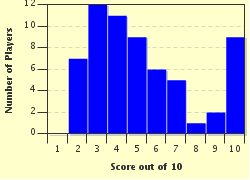Quiz Answer Key and Fun Facts
1. We're looking for the current of a circuit, given the voltage and resistance. What law (out of the choices) would be the best to get an immediate answer?
2. We're looking for the force of something, given the mass and acceleration, and/or the gravitational constant. What law (out of the choices) would be the best to get an immediate answer?
3. We're looking for the volume of a gas, given a special constant, as well as the pressure, amount of the gas, and temperature. What law (out of the choices) would be the best to get an immediate answer?
4. Given: two gases with both pressures known, and the volume of one of the gases. We want to find the volume of the other one. What law (out of the choices) would be the best to get an immediate answer?
5. If we were given the volume of two gases, and temperature of one of them, we can use Gay-Lussac's Law to find the fourth quantity.
6. Allen Ginsberg coined this scientific law as: "You can't win". What exactly is it?
7. Using a special constant, the charge of one point source, and an arbitrary distance, one can find which of these?
8. The Second Law of Thermodynamics only deals with one value. What is it?
9. Einstein's famous mass-energy equivalence involves both mass and energy, but both are related via what quantity squared?
10. Given a force and a specified distance, what general activity can we calculate?
Source: Author
omar7812
This quiz was reviewed by FunTrivia editor
rossian before going online.
Any errors found in FunTrivia content are routinely corrected through our feedback system.


